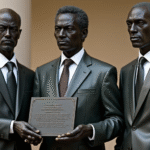Introduction
The Rio Grande, also known as the Rio Bravo, faces an urgent water crisis that demands binational cooperation between México and the United States. The North American Development Bank (NADBank), headquartered in San Antonio, Texas, is committed to investing in sustainable infrastructure and ensuring clean water access for the border region.
Importance of the Rio Grande
The Rio Grande is more than a geographical boundary; it’s a watershed originating from Colorado’s Rocky Mountains, nourished by tributaries like Mexico’s Río Conchos. Numerous smaller streams traverse Texas, Coahuila, and Tamaulipas, sustaining communities, ecosystems, and economic activities on both sides of the border.
Approximately six million people in both countries rely on the Rio Grande for their daily water needs. The agricultural sector thrives in this watershed, making it crucial to the North American food supply chain.
Economic and Community Impact
Rivers not only quench thirst and nourish crops; they build communities and drive economies. San Antonio exemplifies how responsible, long-term river management can shape culture and prosperity. Similar opportunities exist along the Rio Grande, such as in Laredo and Nuevo Laredo, where a shared vision aims to create a binational urban park transforming the riverbanks into spaces for community, recreation, and environmental restoration.
Ecological Significance
The Rio Grande’s riparian zones harbor diverse flora and fauna, including Big Bend National Park in the U.S. and Mexico’s Sierra del Carmen and Maderas del Carmen reserves, reflecting the region’s rich biodiversity.
The Crisis
Despite its critical importance, the Rio Grande faces a crisis. American Rivers ranked it as one of the five most endangered rivers in the U.S. due to prolonged drought and increasing hydrological stress.
Less than 20% of its flow reaches the Gulf of Mexico. In 2024, two south Texas counties declared emergencies due to critically low water levels. Across the border, Mexican cities like Reynosa and Matamoros face similar challenges.
Binational Response
Addressing this crisis requires a solid, coordinated binational response involving local communities, border state governments, federal agencies, and institutions like the NADBank.
NADBank Initiatives
The NADBank collaborates closely with key stakeholders across the border region to tackle water insecurity directly. Recent initiatives include providing technical assistance to the four-county Rio Grande Valley region to develop a long-term water action plan. Simultaneously, the Bank is finalizing a $400 million Water Resilience Fund to support municipalities, irrigation districts, and other water users in adapting to current and future hydrological challenges.
Before final approval, initiatives like the Water Resilience Fund undergo public consultation. The NADBank believes transparency and community engagement are essential for building lasting solutions and ensuring all interested parties participate in the process.
Conclusion
The NADBank is dedicated to ensuring future generations along the Rio Grande enjoy water security, economic opportunities, and a river worth celebrating. As the year progresses, let’s remember that while rivers don’t recognize borders, they do require our shared commitment.
Key Questions and Answers
- What is the Rio Grande? The Rio Grande, also known as the Rio Bravo, is a vital watershed originating from Colorado’s Rocky Mountains, nourished by tributaries like Mexico’s Río Conchos.
- Why is the Rio Grande crucial? Approximately six million people in both countries rely on the Rio Grande for their daily water needs. The agricultural sector thrives in this watershed, making it crucial to the North American food supply chain.
- What challenges does the Rio Grande face? The Rio Grande faces a water crisis due to prolonged drought and increasing hydrological stress, with less than 20% of its flow reaching the Gulf of Mexico.
- What is being done to address the crisis? The NADBank collaborates with stakeholders across the border region to tackle water insecurity directly. Initiatives include providing technical assistance and establishing a $400 million Water Resilience Fund.






